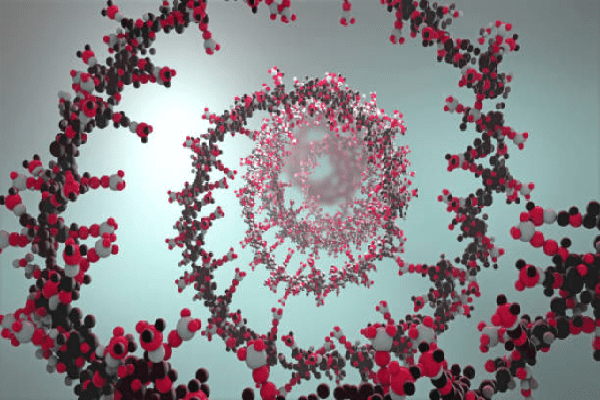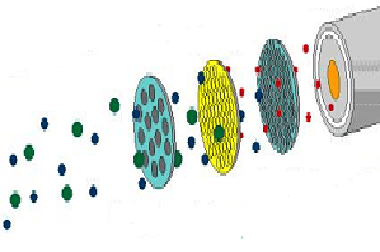Interesting >>>> Immobilized enzymes
Immobilized enzymes.

Technologists and engineers, studying biochemical processes in nature, always ask the question: “Is it possible to initiate such processes in laboratory conditions, to program the course of events, to obtain the expected result? “So they could not ignore the enzymatic activity of living organisms. As you know, enzymes - these are proteins - catalysts, they direct chemical reactions for the transformation of some chemical structures into others (one substance into another), but enzymes have a significant drawback: after the processes of transformation of substances, they themselves, being unstable compounds, are lost. This led to irrational waste of enzymes, which had to be constantly extracted for their use in artificially created conditions of industrial production.
Scientists have noticed that enzymes are composed of many hydroxyl groups, but some inorganic substances (dextran, cellulose, agar, glass, plastics) also have similar hydroxyl groups, and this makes it possible to attach enzymes to such suitable "carriers". And as it turned out later, the enzymes attach to the selected carriers immobile and, after the end of the reaction, still remain on them in a state of activity. Such enzymes were called immobilized and quickly found their use in various industries: medicine, food industry, pharmaceutical industry. In fact, combinations of enzymes and their carriers have made another breakthrough in the field of biotechnology.

Immobilized enzymes – application.
Immobilized enzymes are currently used in pharmaceuticals in the production of semi-synthetic derivatives of penicillin (ampicillin, oxacillin, amoxicillin, dicloxacillin and many others), which helped medicine in the fight against bacterial infections that were no longer affected by penicillin due to bacterial resistance to it.
On the basis of dextran as a "carrier" (in particular, chemically modified starch), harmless carriers of medicinal components disintegrating in the body are produced, which makes it possible to more accurately direct and transport medicinal components to various areas of the body.
Immobilized enzymes in medicine and environmental management are used as a kind of sensors for analysis (enzyme immunoassay, bioluminescence), for perfusion purification of biofluids. For the analysis, enzymes are applied to electrodes, filters, membranes, plastic glasses, the surfaces of which are in contact with the analyzed content.
In the food industry, immobilized enzymes have been of great help in the production of dairy products with deduced lactose, which causes allergic reactions in many people because their bodies do not have the necessary enzyme to break it down. Milk, processed with immobilized enzymes at the production stage, enters food in a digestible and safe, from the point of view of allergenicity, condition.
Technologists have learned how to obtain glucose-fructose syrups from sugar using immobilized enzymes, convert glucose into fructose (the so-called honey sugar), and obtain sugar from whey. The practical application of such metamorphoses led to a decrease in the amount of sugars in sweets and drinks while maintaining the same level of sweet taste, but a reduced amount of calories, since sucrose is replaced by glucose, which, in turn, by fructose, the amount of which can be reduced in the composition of sweet foods ...
The use of amino acids in the food industry and pharmaceuticals, coupled with their costly methods of extraction from natural sources, reached a new level of production, when immobilized enzymes began to be used to obtain optical isomers of amino acids. This made it possible to establish in-line production of amino acids as feed additives and to reduce the cost of their production for other industries.
Applied physics uses immobilized enzymes to create signal amplifiers, which has made it possible to create sound and mechanosensitive sensors to regulate catalytic activity (applicable in photographic production).
In the field of invention and use of immobilized enzymes, there are still many niches worthy of further study and development of new technologies, so the biotechnological industry has every reason to continue studying enzymatic activity, and the enzymes of the future are thermophilic enzymes that can withstand high temperatures.

Read

Read



























